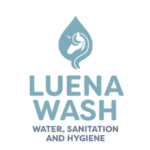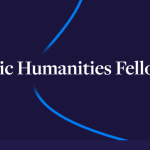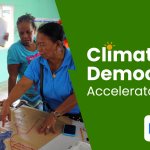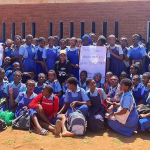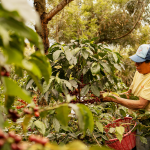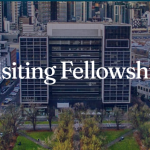Pendi briefing the community members. https://www.un-redd.org/multi-media-stories/barren-bountiful-how-social-forestry-transforming-landscapes-indonesia
Updated and Refined by Happy Tarumadevyanto – happy.devyanto@environmental.asia
A critical challenge for the Social Forestry (Perhutanan Sosial) program is that it remains primarily focused on expanding land use permits to maximize community participation. While the distribution of land ownership is growing, the effort largely stops after the license is granted.
The program has not yet fully demonstrated its value as a viable business model based on strong social and environmental principles. Many beneficiaries are constrained by a post-licensing dilemma: “The license is acquired, now what?” This highlights a crucial lack of technical support, market access, and business planning necessary for communities to successfully transition from permit holders to sustainable forestry entrepreneurs.
The Social Forestry (Perhutanan Sosial or PS) program in Indonesia has historically heavily focused on expanding land tenure permits, though there is no single percentage stating that “X% is focused only on licensing.”
This focus on permit expansion is evident from the following data and criticisms:
🔑 Evidence of Focus on Licensing
- Target vs. Permit Realization: The government (KLHK or Ministry of Environment and Forestry) set an ambitious target of 12.7 million hectares for PS. By the end of 2023, approximately 7.76 million hectares had been realized. These frequently highlighted figures demonstrate success primarily in the aspects of legality and expanding access to management rights.
- The key takeaway: The main metric for success in the initial phase of the program was the number of hectares with permits and the number of official decrees (SK) issued.
- Post-Licensing Implementation Gap: Criticisms from civil society and permit-holding groups (Kelompok Usaha Perhutanan Sosial/KUPS) indicate that the greatest focus remains on the pre-licensing phase (application and SK issuance).
- The Main Problem: After the permit is obtained, technical support, access to capital, and assistance for developing sustainable forest businesses remain minimal or uneven.
- Government Statement: Even President Jokowi, in 2020, emphasized that PS was “not just a matter of granting permits,” implicitly acknowledging the tendency to focus on licensing.
📉 Why the Licensing Focus Dominates?
This emphasis on licensing was driven by the core initial objectives of the PS program:
- Reducing Tenurial Inequality: Shifting land control away from corporate dominance (which previously accounted for over 95%) to communities. Licensing is the legal tool to achieve this equalization.
- Conflict Resolution: Granting legal certainty and management rights to communities is the first (and often most difficult) step in resolving tenurial conflicts in forest areas.
✨ Shift in Policy Direction
Currently, the policy direction has shifted. The focus is no longer solely on the quantity of permits but on improving quality and economic value through:
- KUPS Strengthening: Developing the business institutional capacity of communities surrounding the forests.
- Hilirisasi (Downstreaming): Encouraging PS products to have added value and better market access (e.g., coffee clusters, honey, or eco-tourism).
Thus, rather than a specific percentage, the strongest evidence is the disparity in resources and policy attention historically allocated to “obtaining the permit” over “running a sustainable business after the permit is obtained.”
The graphic concept you can create to demonstrate that Social Forestry (Perhutanan Sosial or PS) has not fully become a viable business model (sustainable/profitable) despite its high legal component is by comparing achievements across two main dimensions: Legal Access (Permits) and Business Capacity (Economics).
Since there is no single percentage stating the focus is solely on licensing, this graph is based on the post-permit implementation gap and the main obstacles faced in the field, according to findings from various study reports.
📊 Conceptual Graph: Indonesia’s Social Forestry Performance Gap
| Y-Axis (Vertical): Level of Achievement (in Relative Percentage) |
| X-Axis (Horizontal): Performance Dimension |
| Bar 1 (Light Green): Legal Access (Issuance of Management Permits) – Value: ≈85%−90% |
| Bar 2 (Red/Orange): Sustainable Business Capacity (Viable Business Model) – Value: ≈30%−40% |
| Caption: The significant gap between the ease of obtaining permits (Legality) and the ability to run independent enterprises (Business) indicates the program’s primary focus remains on the initial phase of land redistribution, not economic sustainability. |
Explanation and Interpretation of the Graph
This graph illustrates the findings that:
- Legal Access (High, ≈85%−90%): Refers to the government’s (KLHK) success in issuing Official Decrees (SK) for management rights. This is an indicator that Land Redistribution has been legally successful.
- Supporting Data: The realized area of PS has reached millions of hectares (about 7.76 million Ha by 2023 out of a 12.7 million Ha target), demonstrating a strong policy focus on permit expansion.
- Sustainable Business Capacity (Low, ≈30%−40%): Refers to the ability of Social Forestry Business Groups (KUPS) to operate independently, with access to markets, capital, and technology that ensures their forestry business is profitable (viable) without depending on sporadic technical aid.
Conclusion: The PS program has succeeded as a tool for Agrarian Reform (granting management access) but has not fully succeeded as a tool for Community-Based Sustainable Forestry Business Development that is independent and sustainable (NOT a viable business model).
Key Sources of Reference
- Ministry of Environment and Forestry (KLHK) RI: Official reports on Social Forestry achievements and KUPS statistics (Primary source for permit quantity data).
- NGO and Academic Reports: Case study reports and post-permit evaluations from institutions like WALHI, ICEL, Forest Digest, and university research (UGM, IPB, UI), often highlighting technical constraints, minimal post-permit capital support, and low capacity building for KUPS.
- Public Official Statements: Statements by the President or Ministers emphasizing the importance of post-permit assistance and the transition from mere licensing to business, confirming the existence of this gap.

